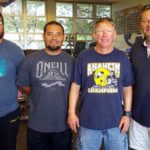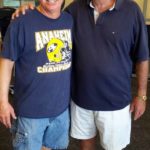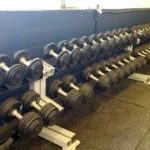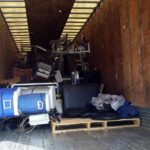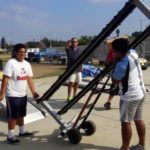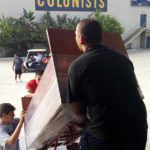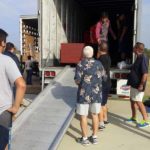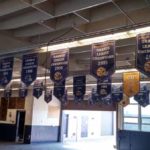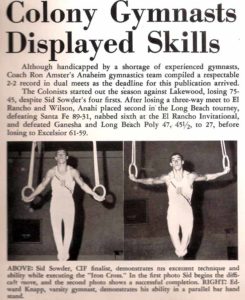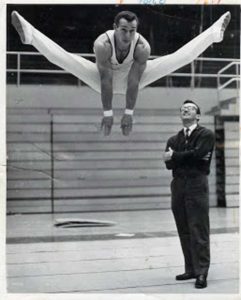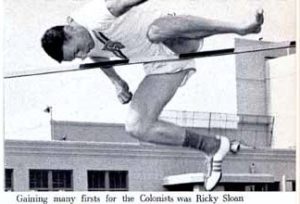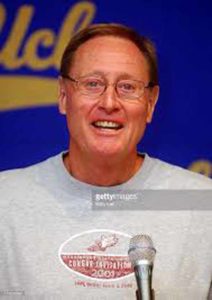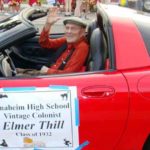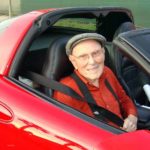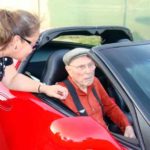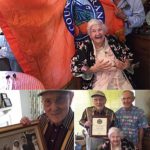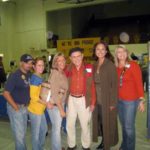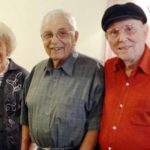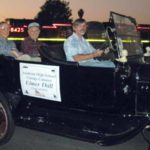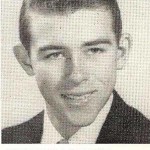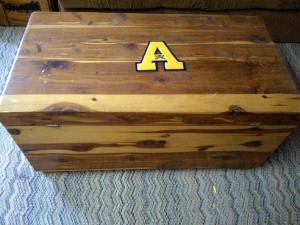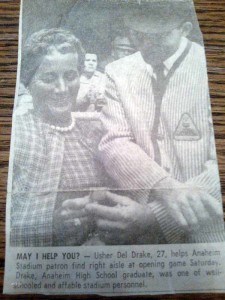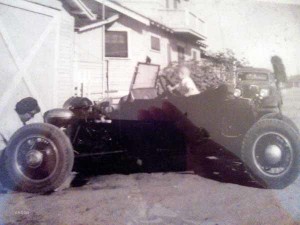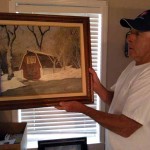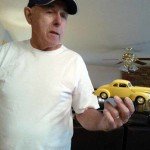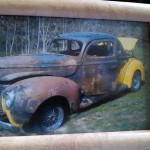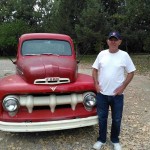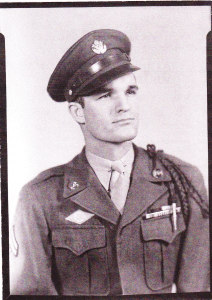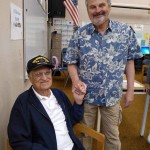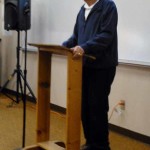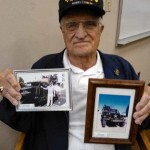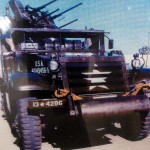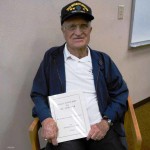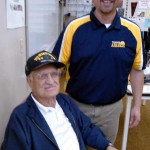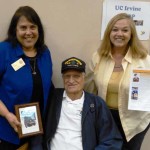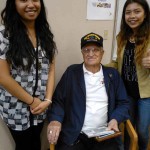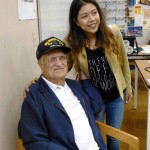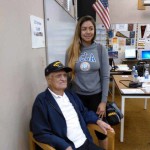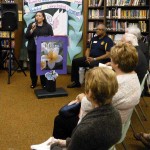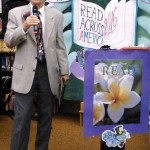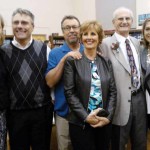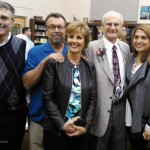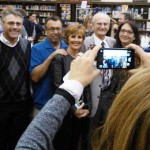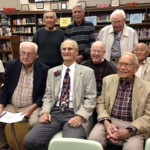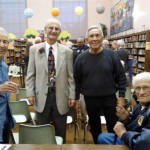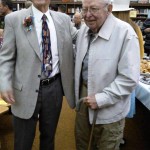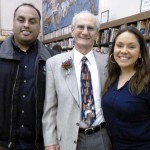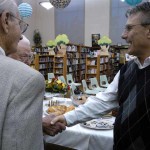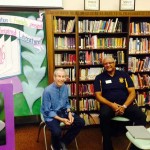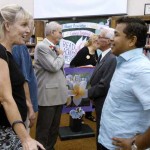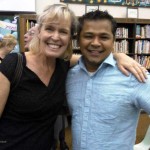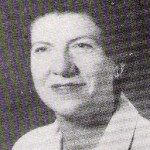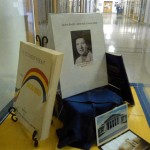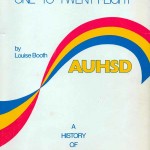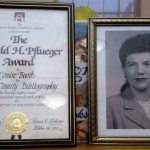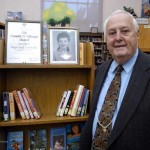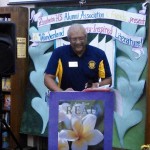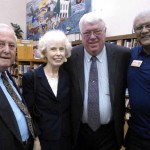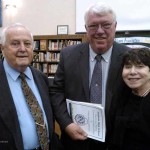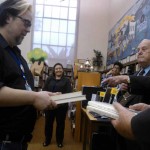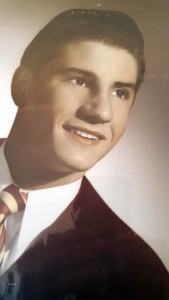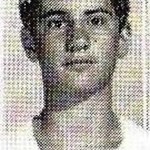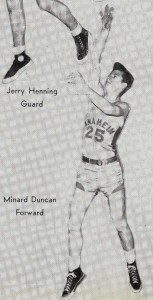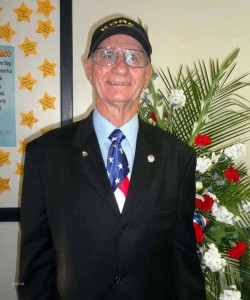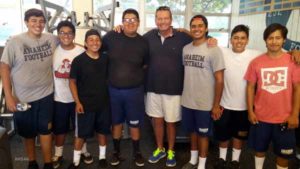
Jim Fassel with Colonist athletes who will benefit from new fitness equipment.
What do you get when you add an alumnus who grew up on Anaheim High’s athletic fields with access to Grade A exercise and training equipment? Happily, for AHS, the answer is a new fitness center, a first for the Colony campus.
Three semi-trucks filled with state-of-the art weight room, training equipment, furniture and more has been donated to Anaheim High by alumnus Jim Fassel (’67). Ultimately, the donation will fill two refurbished rooms remembered by some alumni as the auto and machine shops. These large workspaces will house equipment valued at more than $100,000 to create a fitness center and a top-notch training room. Fassel has also funded new flooring for the facility that will be named the “Fassel Family Fitness Center” once approval is received by the AUHSD.
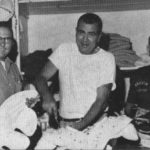
Bud Fassel working on a pair of shoulder pads.
Hundreds, if not thousands, of Anaheim athletes were shaped and guided by Jim’s father, Bud Fassel (‘39), who served as right-hand man to Clare Van Hoorebeke in his role as equipment manager. But Bud did much more than care for athletic equipment, according to Gerald “Woody” Woodward from Class of ’59, who serves as AHS Alumni Association president.
“Bud counseled, guided and supported the young men who were part of the Anaheim High athletic program,” said Woodward. “He cared for the kids and was a father figure to us all.“
Woodward said there were many occasions when Bud asked his wife to pack extra sandwiches in his lunch that he shared with students too poor to afford lunch. He also hired students to work in the equipment room so that they could afford to buy lunch or pay for the medical insurance that the student-athletes had to purchase. “He was one of the most caring and generous people I have ever known.”
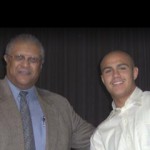
AHSAA President Gerald Woodward congratulates Luis Amaya, recipient of the Bud Fassel Memorial Scholarship.
Bud’s impact was evident when, in 1992, hundreds of former students and athletes attended his funeral to honor him for his more than 25 years at Anaheim High. His contribution to Anaheim High continues today through an annual Bud Fassel Memorial Scholarship.
Bud’s son was among the outstanding athletes produced by Anaheim High. From the days of playing football at AHS, Jim went on to a successful career in the world of football. He was named NFL Coach of the Year in 1997, and he took the New York Giants to Super Bowl XXXV in January 2001. Most recently, he served as head coach, manager and president of the Las Vegas Locomotives in the United Football League, winning several UFL titles during the league’s existence. He also works as an ESPN sports announcer.
Jim’s son, John Fassel, is also walking in his grandfather and fathers’ footsteps. Once a ball boy for his father at the University of Utah in 1976, John was recently named interim head coach for the LA Rams, taking a break from his usual position of special teams coordinator.
Once the new fitness and training centers are complete, the Colony community will be invited to the grand opening in 2017 to celebrate this outstanding donation by one of Anaheim’s favorite sons.
- AHS football coaches with Jim Fassel
- Coach Lanny Booher and Jim Fassel
- Jim Fassel and Principal Dr. Corral
- Mickey Flynn is on hand to supervise unloading of trucks carrying fitness equipment donated by Jim Fassell
- Some may remember this room as the former autoshop.
- The fitness center with new flooring and championship banners.
